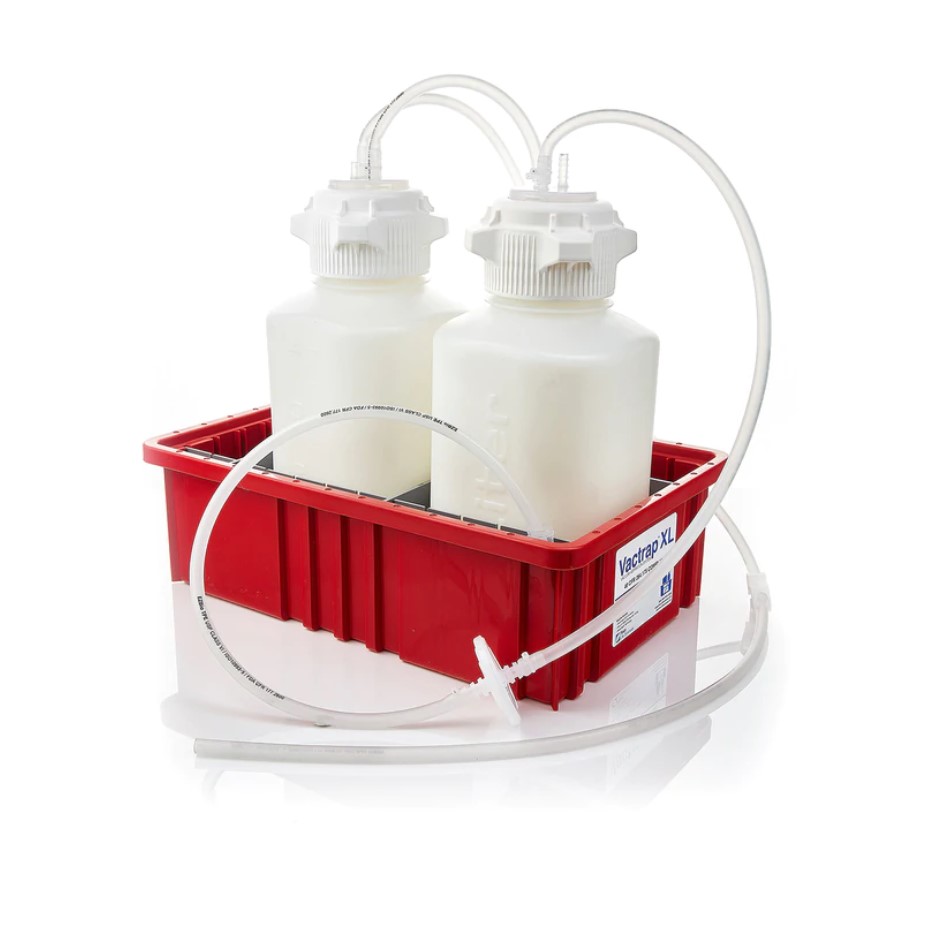All manufacturing industries struggle with clean and efficient garbage disposal.
Scientific laboratories are notorious for producing waste, much of it hazardous biological material which requires special handling.
The process of growing mammalian cells produces plastic waste from used pipette tips, used cell culture flasks, used serological pipettes and more.
Culturing cells also generates significant liquid waste as used cell culture media and other reagents are added and removed in the process of growing cells.
Plastic waste is collected in bright red biohazard bags and taken to a huge autoclave for sterilization and then on to an incinerator.
Liquid waste like supernatant, antibiotics, hormones, FBS (Fetal Bovine Serum) and other media are trickier to collect and process.
What is a vacuum trap?
The vacuum trap is a contraption that is designed to siphon off biological liquids and trap them safely.
To build a vacuum trap a laboratory needs a vacuum stable bottle with a sealed lid, tubing, some sort of pinpoint vacuum head for collecting liquid, and a secondary container to capture any liquid that might leak or overflow from the main receptacle.
The most common vacuum traps are glass Erlenmeyer flasks with a cork or rubber stopper that has pre-drilled holes and piping to secure the tubing
How does a vacuum trap work?
To operate the vacuum trap, one end of the tubing connects the bottle to an inhouse built-in vacuum or a stand-alone vacuum, while the free end runs from the bottle stopper into the biosafety cabinet to suction up the liquid into the bottle.
Building a vacuum trap is a time-consuming activity that requires sourcing each component from different suppliers.
The most expensive component is the glass Erlenmeyer flask which can run several hundred dollars
Besides their cost, vacuum traps are also notoriously disgusting to look at and difficult to clean.
Narrow mouth glass bottles filled with yellow or browning liquids are like bed pans for the laboratory.
Is there a better vacuum trap?
Yes! The amazing Vactrap2 and Vactrap XL come pre-assembled ready to use in seconds.
No more shopping around to match the right stopper with your bottle.
The tubing is included along with a pre-attached .22 micron filter and a pinch valve.
Vactrap bottles are made from either bleachable HDPE or autoclavable polypropylene and the bottles are opaque to hide the waste from view.

Vactrap systems come with a visible fire-engine-red secondary container that cannot be easily knocked over.
Vactrap systems are pre-made with either single bottles or dual bottles to increase capacity.
No glass bottles to trip over or drop in transport makes the laboratory a safer place to work.
Throw away your gross vacuum trap and make your lab a cleaner and safer place with a Vactrap today!


